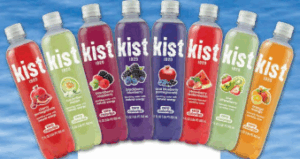Returning to its decision in Kroy IP, the US Court of Appeals for the Federal Circuit denied a petition for panel rehearing and rehearing en banc, leaving undisturbed its prior opinion that collateral estoppel does not apply to the assertion of claims from a patent, even when other patentably indistinct claims from that patent have been found unpatentable in inter partes review (IPR) proceedings before the Patent Trial & Appeal Board. Kroy IP Holdings, LLC v. Groupon, Inc., Case No. 23-1359 (Fed. Cir. Aug. 1, 2025) (per curiam) (Moore, J., concurring) (Dyk, J., dissenting).
Kroy sued Groupon for patent infringement, and Groupon subsequently filed two IPR petitions. The Board ultimately found 21 of the asserted claims unpatentable. Kroy amended its complaint to remove those 21 claims and proceed only with claims that were not at issue in the IPR proceedings. Groupon moved to dismiss the complaint, arguing that Kroy was collaterally estopped from asserting the remaining claims because of the Board’s prior IPR rulings finding other patentably indistinct claims unpatentable. The district court agreed with Groupon, finding that the remaining asserted claims were not materially different from the unpatentable claims in terms of validity and granted the motion to dismiss with prejudice. Kroy appealed.
The Federal Circuit held that a Board determination finding certain patent claims unpatentable under the preponderance of the evidence standard did not collaterally estop Kroy from asserting other unreviewed claims of the same patent in district court litigation against Groupon. Groupon subsequently petitioned for panel rehearing and rehearing en banc, both of which the Federal Circuit denied per curiam.
Chief Judge Moore, joined by Judge Stoll, concurred in the decision. In her concurring opinion, Judge Moore explained that collateral estoppel does not apply where differing standards of proof exist (namely, the preponderance of evidence standard used by the Board versus the clear and convincing evidence standard applied in district courts) because this difference can materially affect a patent’s validity determination. She emphasized that collateral estoppel should apply consistently in patent cases and cautioned against deviating from the established collateral estoppel standards. Judge Moore also noted that policy concerns are mitigated by the ability to file a second IPR petition, because the Board is likely to grant review where a petition raises a substantially similar question of invalidity.
Judge Dyk, joined by Judge Hughes, dissented from the decision. The dissent advocated departing from the traditional burden-of-proof rule applicable in the collateral estoppel context to avoid duplicative litigation regarding patent validity. The dissent argued that the majority opinion conflicted with the Federal Circuit’s 2018 opinion in XY, LLC v. Trans Ova Genetics, which held that collateral estoppel extends between Board decisions and district court proceedings in pending or co-pending actions. According to the dissent, the majority’s approach permits repeated litigation of the validity of patent claims previously found unpatentable in IPR proceedings affirmed on appeal. The dissent expressed concern that applying collateral estoppel in this manner would enable patentees to evade the preclusive effect of adverse IPR [...]
Continue Reading
read more


 Subscribe
Subscribe



